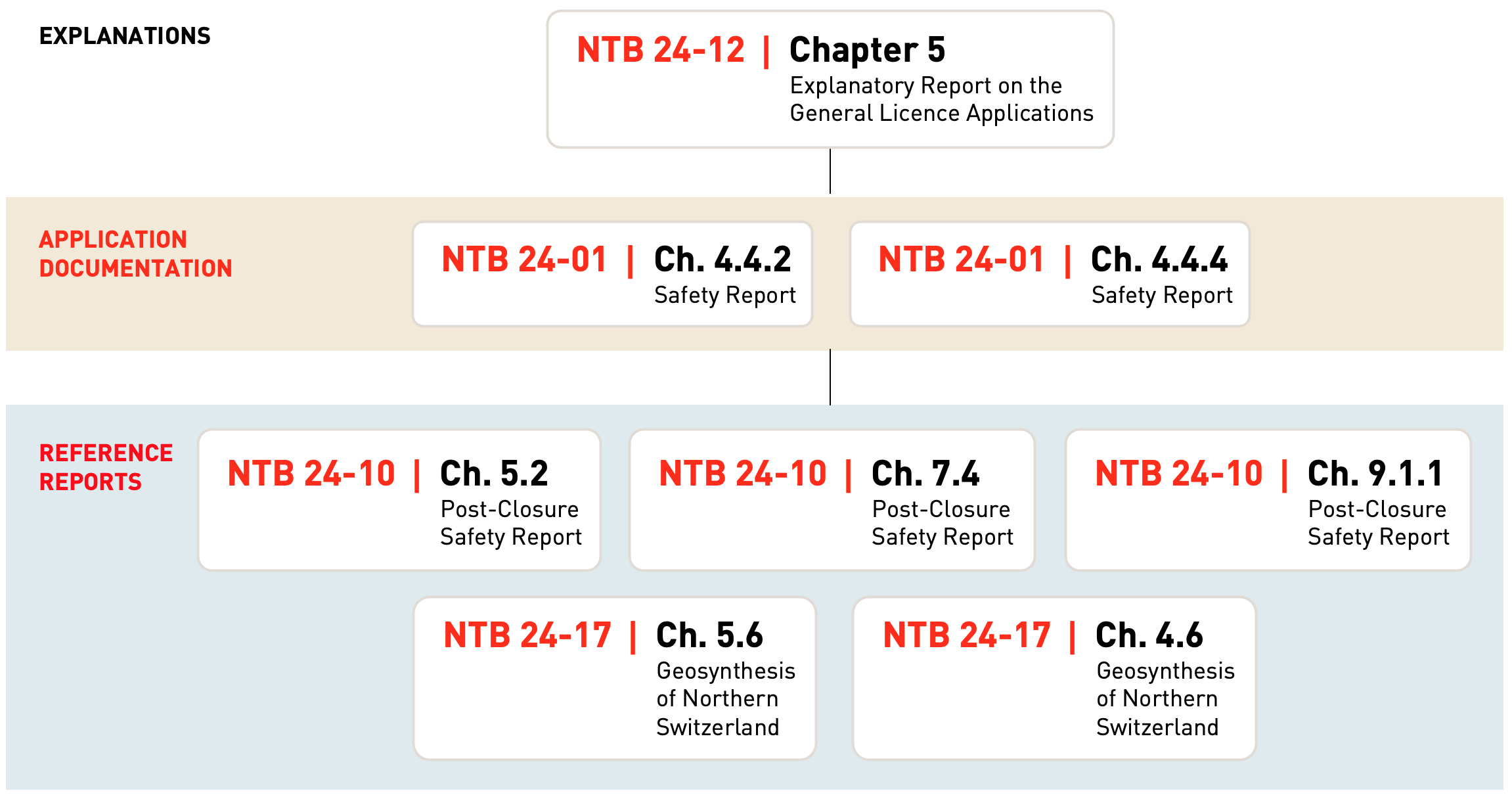 The low hydraulic permeability of the Opalinus Clay is one of the central arguments contributing to the post-closure safety of the deep geological repository (Explanatory Report on the General Licence Applications, NTB 24-12, Chapter 5).
The low hydraulic permeability of the Opalinus Clay is one of the central arguments contributing to the post-closure safety of the deep geological repository (Explanatory Report on the General Licence Applications, NTB 24-12, Chapter 5).
One of the most important parameters for ensuring the barrier function of the Opalinus Clay host rock is low hydraulic permeability. The Opalinus Clay has an extremely low hydraulic permeability (Sicherheitsbericht (“Safety Report” (in German)), NTB 24-01, Section 4.4.2), which is why diffusion is the dominant transport mechanism for radionuclides in the Opalinus Clay (Sicherheitsbericht, NTB 24-01, Section 4.4.4). In this way, the Opalinus Clay makes an important contribution to the retention of radionuclides.
The Opalinus Clay has a number of excellent properties, such as the aforementioned low hydraulic permeability, that retard the transport of radionuclides (Post-Closure Safety Report, NTB 24-10, Section 5.2). These properties contribute to large safety margins in the radiological consequence analysis of safety scenarios (Post-Closure Safety Report, NTB 24-10, Section 7.4). Porewater profiles obtained at the site confirm that the transport properties have remained stable over geological timescales (Post-Closure Safety Report, NTB 24-10, Section 9.1.1).
A high clay mineral content is a prerequisite for low hydraulic permeability. Due to its high clay mineral content, the hydraulic permeability of both disturbed and undisturbed Opalinus Clay is extremely low. In general, the hydraulic permeability of the Opalinus Clay does not vary much. The hydraulic permeability of the confining geological units is also low to very low (Geosynthesis of Northern Switzerland, NTB 24-17, Section 5.6). An independent demonstration of the hydraulic barrier function and the extremely low transport rates in the containment-providing rock zone is provided based on profiles of natural tracers in porewater at formation scale (Geosynthesis of Northern Switzerland, NTB 24-17, Section 4.6).
